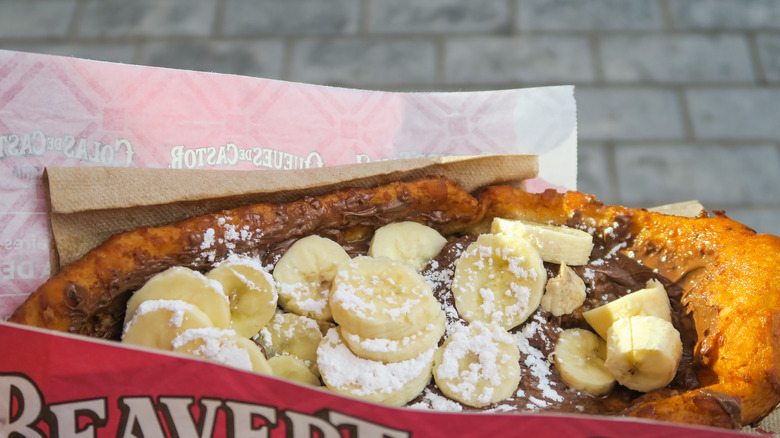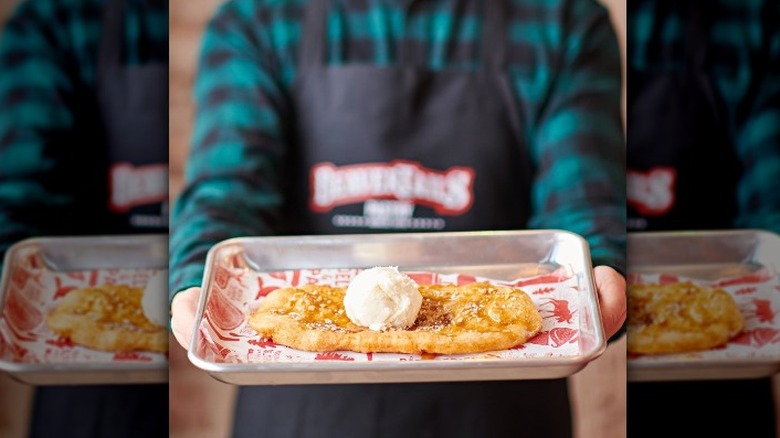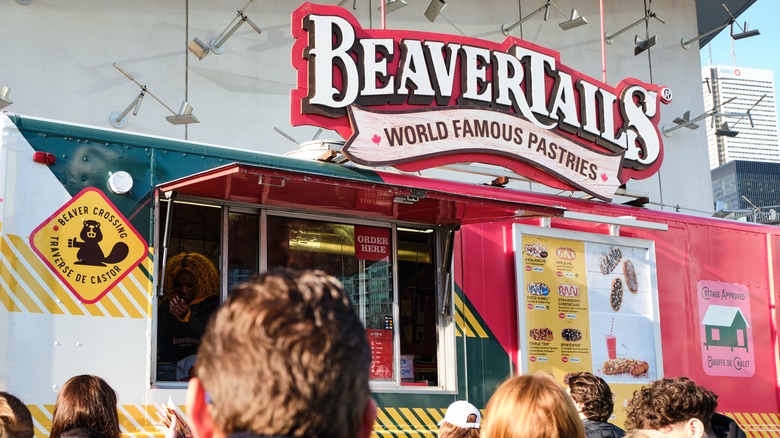The Discontinued Epcot Treat Fans Won't See Returning
One place to find the best food in Disney's many amusement parks is Epcot's World Showcase located in Walt Disney World. Epcot's best restaurants let guests travel around the world and sample international cuisines without stepping foot outside Orlando. Like most things Disney, these restaurants have developed a devoted fanbase that always takes notice of exciting new offerings. These eagle-eyed patrons also notice when a beloved treat disappears from the menu.
One such disappearance was the BeaverTail. Trapper Bob's BeaverTails served as the Canadian stop on the World Showcase and gave guests the opportunity to try an iconic Canadian pastry. BeaverTails are a type of wide, flat, fried dough often sprinkled with cinnamon and sugar that are most easily compared to a donut in the shape of — you guessed it — a beaver's tail.
These treats were sold in Epcot for about eight years until the stand was removed from the park around 2004. While one commenter on The Disney Blog speculated that poor sales were the reason for the dessert's eventual disappearance, there were also licensing issues at play. While BeaverTails are a common dessert throughout Canada, Walt Disney World partnered with the BeaverTails chain restaurant for the use of its name and recipe. When their licensing agreement expired, the stall was closed down.
Because the pastry's disappearance involves corporate contracts as well as customer demand, it's unlikely that BeaverTails will make a return to Epcot any time soon.
Why did people love Trapper Bob's BeaverTails?
The disappearance of BeaverTails was met with disappointment from fans and even sparked several online petitions to bring the stall back to Epcot. This might sound like a lot of fuss over some fried dough, but BeaverTails are much more than that.
The most basic BeaverTail was topped with cinnamon sugar, but there were also more decadent options that stole people's hearts. These included chocolate hazelnut and sugar, maple and chocolate, strawberries and whipped cream, apples and cinnamon, and Killaloe sunrise, which included cinnamon sugar topped with a spritz of fresh lemon juice.
Because BeaverTails are flat in shape, they're able to accommodate much heavier toppings than your usual round donut. They're also much larger as well, and can easily be shared among a group, making them the perfect treat to snack on while exploring Epcot and the other Disney parks.
While BeaverTails might not be available in Epcot anymore, they can still be found all throughout Canada, as well as in Dollywood in Tennessee, and Lagoon Park in Utah.
History of BeaverTails
While BeaverTails were a novel dessert for folks in Florida, they've been around Canada in one form or another for almost 200 years.
According to Culture Trip, before BeaverTails were pastries, they were actual beaver tails. Canada's first citizens apparently roasted them over the fire until their hard exteriors cracked open to reveal the meat inside. Some of the first settlers went on to use this cooking method to make quick-rising bread over an open fire. They would shape their dough in the same style as a beaver's flat tail, and support it with sticks while it cooked.
At some point along the way this cooked dough became fried dough, and then in the 1970s, the company BeaverTails was launched. Co-founder Grant Hooker says that the original recipe was passed down to him by his grandmother. This means that the sweet variety of this fried dough is likely close to 100 years old.
The first BeaverTails were sold at the Killaloe craft and community fair (a fitting origin for one of Canada's most unique fair foods). From there, the flagship store would open in Ottawa in 1980, and a year later would open a stall on the Rideau Canal where it would go on to become an iconic after-skate snack for those enjoying the canal's frozen waters. While you might not find these tasty fried concoctions in Epcot anymore, they are luckily a popular and common pastry found throughout the Great White North should you get a craving.


